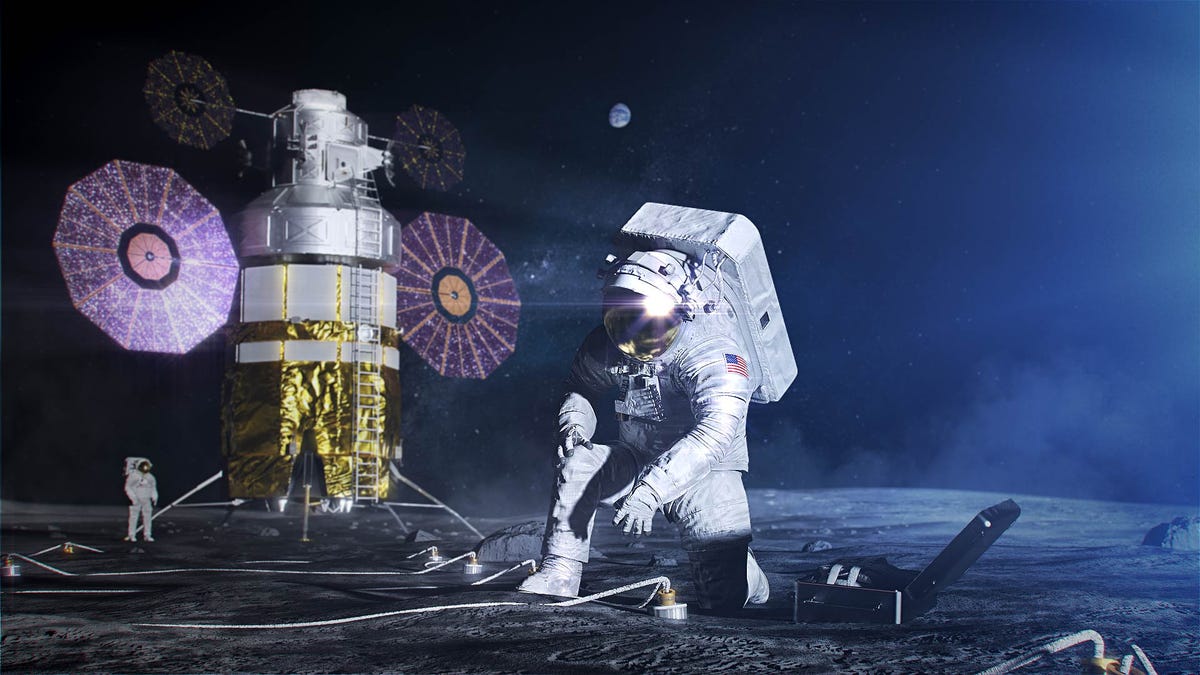
The new spacesuit being designed for the mission is sleek and ultra high-tech, with a swath of features not possible during the Apollo era.
Here’s what you need to know about the Artemis spacesuit and how it will take lunar exploration to the next level.
On December 14, 1972, when Apollo 17 astronauts Eugene Cernan and Harrison Schmitt lifted off from the lunar surface, no one in their right minds would have believed it would take a half-century to do it again.
And of course, NASA is also working on its next lunar spacesuit, which it’s calling the Exploration Extravehicular Mobility Unit, or xEMU for short.
That’s a hefty price tag, considering NASA has prior experience building suits for the Apollo missions and, more recently, for International Space Station astronauts.
And indeed, xEMU is visually similar to the suits worn by astronauts during ISS spacewalks, but that’s basically where the comparison ends.
“Going outside of low-Earth orbit and to the surface of the Moon, the suits will be subjected to higher radiation levels and temperature extremes than our current [ISS] suit,†said Hansen.
“The new suits have more complex avionics [electronics] than the Apollo suits, so we have to be very careful to select parts that are radiation hardened and designed to operate in that environment.â€.
For the Artemis 3 mission (the first to feature a crewed landing), NASA wants to land its astronauts near the lunar south pole.
But this spot on the lunar surface is quite frigid—considerably colder than anything Apollo astronauts had to deal with.
The suits will also have to endure a full week in these conditions, as that’s how long each mission on the surface is supposed to last.
Hansen said he’s particularly excited about two new technologies in the xEMU that have never been incorporated into a suit design before.
“One is our new cooling system called the SWME—we pronounce it ‘swimmy’—which is the Spacesuit Water Membrane Evaporator,†he said.
“The SWME uses water evaporation to cool the suits and their astronauts, rather than the process of sublimating ice, which is used by all previous suit designs.
During the Apollo missions, it was famously a struggle for the astronauts to move, with their restrictive suits making it difficult for them to perform simple tasks, like bending at the knees or grabbing items from the surface.
This will serve to regulate body temperature and prevent astronauts from burning up inside their suits (remember, heat on the surface is as much a threat as excess cold).
Yes, the xEMU features a diaper, because there are no port-o-potties on the lunar surface.
Excitingly, the new xEMU suit is being designed to accommodate a variety of body shapes and sizes, “which will open the door for significantly smaller people to use the suit effectively,†said Hansen.
NASA has learned that it’s “much more difficult to scale a spacesuit down for smaller people than it is to scale it up,†which is why the design team “intentionally designed and tested the smaller suit size first and have collected a lot of great data about its use by smaller individuals, both male and female,†Hansen said.
An important next step in the development of xEMU will be the building of qualification suits.
A guiding philosophy behind Artemis is that the program will serve as a stepping stone for a crewed mission to Mars, and xEMU is being designed with this in mind.
Hansen said that, in addition to being the most mobile planetary suit ever built, xEMU will also be the most autonomous.
